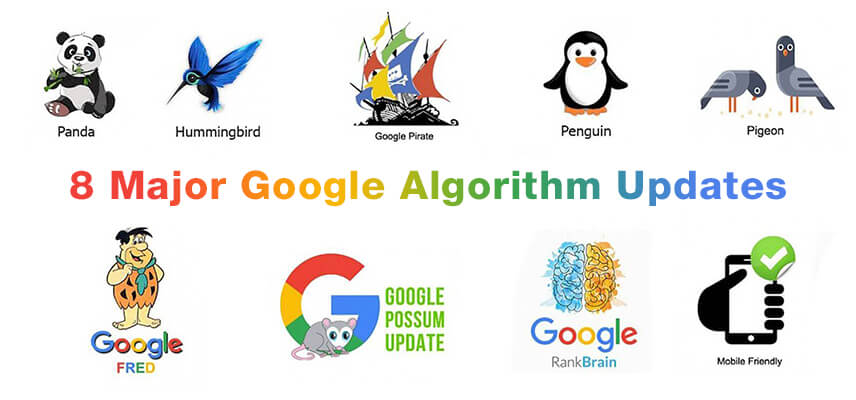

If you are looking to get the most out of your eCommerce content marketing efforts, then you need to look at the various models that are available.
With the right model, you can maximize your ROI and get the best results for your business.
This blog will cover the four most useful models of eCommerce content marketing, and how partnering with a reputable eCommerce SEO services company, can help you get the most out of your eCommerce content marketing efforts.
1. The Driving Model: Unique Articles And Blog Posts
If you want to increase your organic search traffic, then articles may be a good option for you. When writing these pieces, focus on topics that have high competition within Google but still relate closely to your product line so as not to appear spam.
With this model, you start by creating content to drive people to your website. This could be done through blog posts, videos, or infographics that answer common questions about your products and services.
You then link your content back to the page where people can purchase these items or services. This is a very effective model because it helps to establish your brand as an expert in your field and also gives users a chance to learn more about your products and services before making a purchase decision.
The driving model can be used with any type of content that drives people back to their website or landing page.
Good blog posts can assist you in:
- Developing your reputation as an expert in your field
- Helping users to solve their common problems, questions, or concerns about a particular topic
- Providing value and information that will keep people coming back for more
- Getting your users to sign up for a newsletter or email list
- Helping you to build a relationship with your audience, so that they are more likely to purchase from you in the future
- Attracting new visitors to your website or landing page
- Creating content that is relevant, valuable, and helpful for your target audience
What are the KPIs of Unique articles and blog posts?
- Increased brand awareness
- More leads from your website
- Increased traffic to your site and social media channels
- Improved SEO rankings
- Higher conversion rates
- Increased credibility and trustworthiness with customers
2. The Social Media Marketing Model
One of the most popular and effective models is the Social Media Marketing Model. This model is all about leveraging social media platforms to create content and promote products and services. An eCommerce SEO agency USA can help you implement this model for maximum success.
The first step in this model is to create content that will capture the attention of your target audience. This can be done by creating engaging posts that are designed to educate, inform, and entertain.
Then, you will need to optimize your content with keywords and strategic tags, so that your content will be found when customers search for related topics.
Additionally, you should use relevant hashtags and images to make your content more discoverable.
Next, you will need to actively promote your content on various social media channels. This includes posting regularly and sharing your content across multiple networks, such as Twitter, Instagram, Facebook, YouTube, and more. Your eCommerce SEO services will also help you create targeted ads for additional reach.
Finally, you will need to measure and analyze the results of your social media efforts. Tracking metrics such as clicks, views, and shares will give you insight into what is working and what needs to be adjusted.
With the help of an eCommerce SEO agency USA, you can easily monitor the progress of your campaigns and adjust them accordingly.
What are the KPIs of social media marketing?
The KPIs for social media marketing are similar to those for all digital marketing efforts. You want to increase traffic, sales, leads, and ROI. But with social media, there is one additional KPI that you should pay attention to: audience growth.
This can be measured by how many new followers you have gained each week or month (and how much their engagement).
This KPI will allow you to track how well your campaigns are working and if they need to be adjusted. You should also pay attention to the number of shares on your posts as this is another indicator of how successful your efforts have been.
3. The Email Marketing Model
By taking advantage of eCommerce SEO services and other digital marketing tactics, you can craft email content that has a greater chance of being read.
You can use this to build relationships with customers, increase brand awareness, drive website traffic, and generate leads. With effective email marketing campaigns, your business will be well on its way to achieving your goals.
You can accomplish a variety of significant objectives with strategic email marketing. Those who have chosen to join your mailing list receive these communications right in their inboxes
With effective email campaigns, you can achieve the following:
- Increase your site traffic
- Generate leads for your business
- Get to know your audience and what they want
- Promote your products and services to a targeted audience
- Improve your brand awareness
- Increase your sales
What are the KPIs of an effective email campaign?
When you’re planning an email marketing campaign, it’s important to have clear goals in mind. You should know exactly what you want your email outreach to accomplish and how it will help your business grow.
There are several key performance indicators (KPIs) that can help you measure the effectiveness of your emails:
Open rate: This is the percentage of people who open your email, or “click-through rate.” It provides an indication of how engaging your content was—and whether recipients found it valuable enough to click through and read further.
Click-through rate: This is the percentage of people who opened your email and clicked through to your website. It’s a good indicator of how well you can convert viewers into customers or leads.
Conversion rate: The conversion rate is the percentage of people who click through and complete an action on your site—whether it’s making a purchase, filling out a form, or simply reading further.
4. The Website Content
Having effective website content is essential for any eCommerce business. The content of your webpage, including the text, pictures, and videos, is referred to here.
This could consist of infographics, reviews, case studies, brand profiles, product descriptions, and more.
Not only does it help you showcase your products or services, but it also plays a crucial role in SEO (search engine optimization). The content of your website should be optimized to attract customers and keep them engaged.
When done right, the right website content can boost your SEO rankings and make your eCommerce website more visible in search engine results.
What are the KPIs of website content?
The KPIs of your website content are the metrics that you use to measure the success of your online marketing campaigns. You can track these KPIs using Google Analytics and other tools, such as Google Search Console and Google AdWords. Some common website content KPIs include:
- The number of visitors to your website
- The number of page views per visit
- The bounce rate (how many users leave the site after viewing only one page)
- How long do people spend on your website (average time on site and pages per session)
- Number of pages viewed per visit (Average Time on Site)
- The bounce rate (the proportion of visitors who abandon after viewing just one page)
- The number of visitors from a particular source (search engines, social media, or others)
- How much time people spend on your website (Average Time on Site)
- Number of pages viewed per visit (Average Time on Site)
Conclusion:
In conclusion, e-commerce content marketing is an essential part of digital marketing strategy.
While there are many e-commerce content marketing models, the four most useful models of e-commerce content marketing listed in this post are the driving model, social media marketing, the eMail Marketing model and website content model.
You can as well employ other models such as: product content model, the search engine optimization model, the conversion model, and the engagement model.
Each of these models has its own unique benefits and can be used together to create a comprehensive and effective digital marketing strategy for your e-commerce business.
Hire the best SEO company Experts to ensure that your e-commerce content marketing efforts are successful. An experienced eCommerce SEO services provider will understand the nuances of each model and be able to identify the best approach for your specific business goals.
With the right strategy, you’ll be able to maximize your return on investment while still providing valuable content to your customers.






